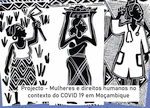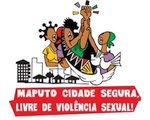Initiation Rites: a Much-Needed Debate
Opinion
by Conceição Osório
We are always integrated into social life through rites that translate different types of inclusion, as a way of affirming our belonging to a group, a society, a culture.
Rites vary according to social contexts, historical periods and images and practices that, constantly readjusted, hold our group and individual identities. In many parts of our country burying the umbilical cord, exposure to the moon, blessings by the elderly are a way of the living, and those who have already departed, sheltering us and protecting us. In other words, life is “organised”, “tidied” and “adjusted” by rites, small rites and big rites: starting school where new rites await us, first love, marriage, first child, with blood the fount of life that stops coming and finally death.
These rites are structured through a material and symbolic apparatus that gives them legitimacy i.e. that transforms them into identity imperatives. And when we look at identities the first question we ask ourselves, takes us (and from birth) to a condition where the starting point is the biological, sexual difference that makes us women and men. And the utility of rites is precisely this formatting of social roles that give the group’s social order the comfort of its reproduction.
Of all the rituals, initiation rituals are perhaps the most decisive and, without wishing to be positivist, the most “definitive” rites. Marking the passage from childhood to adulthood, initiation rites (breaking with sexual neutrality) inform us about social expectations. Structured by a large material and symbolic apparatus, they “say” who we must be, what is permitted for us to think, speak and experience.
Women’s initiation rites are clothed in a set of ceremonies that range from flogging to “potions”, teach that to be a woman is to be absent as a subject, being a woman is being “for the other”, being a woman is “being patient” with life.
But initiation rites, like culture itself, at least in our country, have changed considerably. Irrespective of the areas where they no longer take place (big cities or parts of big cities) because other ways of configuring identities are being found, rites today have little to do with what took place half a dozen decades ago. The reasons are many and complex: they range from war, to displacement and the breakdown/restructuring of families, to the growing influence of the spaces and values of the modern life.
As in the case of other phenomena, rites have been “modernized”: nowadays it is common to see former “elders” who used to direct the rituals, frequently being replaced by women who claimed to be knowledgeable of ceremonies and teachings, who offer their services at prices that vary according to the different families’ ability to pay. In other words, rites have lost their sacred, secret character. They have been transformed into tradable goods, the value of which depends on market supply and demand. Today, rites are paid (and well-paid) services and the longer and more complete, the more expensive.
The content of rites has also changed: they are simpler, they have dropped the more complex and painful ceremonies; knowledge is summarized. Nevertheless, something is retained: girls learn that they exist to serve: in the kitchen, in bed and in the field.
As rites have a negative influence on access to school and staying there, the State has tried to respond on the one hand, by reconciling the school timetable with initiation ceremonies and on the other hand, by removing sexual learning (considered their more negative content) from rites. All the rest can remain: teaching blind obedience to adults, not questioning things imposed by anyone who is older or has more status and above all, that “studying is good but what is really good is to arrange a husband, have a home and have children”.
I do not know if State entities will be able to negotiate the calendar and some aspects of rites. However, three concerns remain. The first is that if that which is traditionally considered a fundamental component (how is the body used and for what?) removed from rites, what are they for?
The second concern is that, if the function of initiation rites is to shape the feminine identity, based on a structure of domination, what is the meaning of a strategy where the State, ignoring the Constitution and the international laws it has ratified, legitimizes the existence of practices that emphasize and defend inequality between women and men?
Finally, how to resolve the irreconcilable contradiction between rites that teach, and are based on, women’s passivity, with the social purpose of school and learning, that should be participatory and involve dialogue. In other words, how come we want women citizens who are active and engaged, capable of reflecting on life and the world, if what they are taught is obedience, fear of the supreme authority of anyone older, the wisest and the all powerful.
* * *







 Information in English
Information in English



















